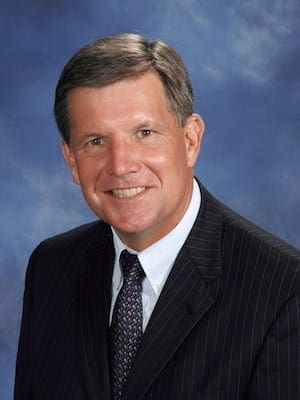Out-of-town friends are calling daily and asking questions like: “How are you guys doing with the oil situation?” and “How do the beaches look?” and “What do you expect to happen in the coming weeks?”
Here are my most recent responses:
· “We’re doing okay right now, but folks are worried about the overall impact.”
· “The beaches look great this week, but last week there were more tar balls.”
· “We’re not sure what to expect at this point because so much of the early information has been unreliable and the forecast scenarios are constantly changing.”
As I write, there is a rather large and nasty sheen of oil just offshore near Pensacola Beach, Fla., and it is anyone’s guess when it will wash ashore. Last weekend there were lots of tar balls. Yesterday you had to look carefully to find even one. The waves crashing the beach are clear and the sand is bright white.
But what will it look like next week? Next month? Next year?
Predictions about the environmental and economic impact of the oil spill on the Gulf seem to change several times a day. These shifting forecasts have been a way of life for Gulf coast residents since the Deepwater Horizon explosion on April 20 triggered what is potentially becoming the most catastrophic environmental disaster in history.
Coastal communities here seem to have experienced more than their fair share of hurdles in recent years. At least four hurricanes inflicted damage on the coastlines of Florida, Alabama, Mississippi and Louisiana from September 2004 to August 2005, with the winds of Ivan and the flooding associated with Katrina wreaking the most havoc.
During the rebuilding season following these successive storms, coastal communities were among the first to experience the effects of a growing recession, an economic phenomenon that severely impaired the vitality of businesses already reeling from the storm damage.
When news of the Deepwater Horizon explosion flashed on screen, our hearts went out to the families of those who lost loved ones because many of our coastal churches and communities have friends and relatives who work on similar rigs and who live much of the year on “floating cities” in the Gulf.
Even when we heard that the explosion had caused a gushing leak about a mile below the surface, we supposed that the leak would be contained within a matter of days and the cleanup of spilled oil would soon follow. But in the subsequent hours and days, news agencies clarified the seriousness of the leak, reported on the failure of successive containment attempts, and began projecting economic and environmental damages.
In early May, I was having breakfast with a group of businessmen when one of them asked me sincerely, “Do you think the Gulf could be the next Dead Sea?”
I think it was at that moment I realized the historic, ongoing, long-term impact this oil spill is likely to have on the Gulf Coast.
Now, two months after the explosion, the leak is still gushing at approximately 2.5 million gallons of oil per day, much more than the original estimates. Although other containment efforts are under way, the most hopeful containment strategy, the drilling of a relief well, is not expected to be completed until August.
There are multiple questions about how life will change along the Gulf.
· What will be the impact on the local economy?
· What will be the ultimate toll on marine life?
· How will the spill affect tourism?
· How long will we see oil in the Gulf?
· Will there be a residential odor?
· What are the health risks of being in the water or even living along the coastline?
· How will a hurricane in the Gulf complicate the risk factors?
After the onslaught of consecutive hurricanes five years ago, even the most weathered storm veterans began to experience “storm phobia.” The dread of another hurricane even motivated a small percentage of residents to sell out and relocate inland.
What is the mood along the coast as we deal with the impact of the oil spill?
There are varying degrees of anger, grief, fear and mistrust. But most of all, there is uncertainty.
In contrast to the “hurricane alertness” that accompanies the beginning of storm season, the mood along the coast these days is dominated by “horizon anxiety,” a psycho-emotive tension caused by the uncertainly of the short-term and long-term impact of the oil spill.
How will our communities respond?
Although there are more than enough hopeless pessimists who have been interviewed by the local and national media, I concur with one restaurateur whose business is being severely diminished by the spill. On national television he emphatically declared: “We are a resilient people. We will make a comeback.”
The anxious mood along the coast is understandable. This is not just about beaches, seafood and dolphins. The implications are global.
We continue to hope and pray for complete containment of the damaged well and a thorough cleanup of our coastline and our waters. But we are not naïve. We know that rising up to meet the challenges presented by this crisis could require more perseverance, more faith and more determination than any prior storm.
And hopefully the lessons learned will make us better stewards of creation in the future than we have been in the past.
Barry Howard serves as senior minister of the First Baptist Church in Pensacola, Fla.
Pastor at the Wieuca Road Baptist Church in Atlanta. He also serves as a leadership coach and columnist for the Center for Healthy Churches. He and his wife, Amanda, live in Brookhaven, Georgia.

